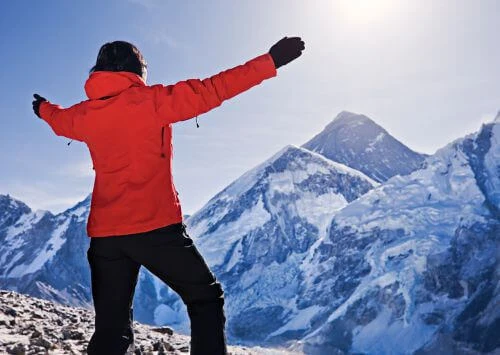The best time to visit Bhutan depends on the traveler's reasons and what time they are planning to visit. March and April during the spring and October and November during the autumn are considered the best. But are the travelers planning a festival or trekking? That is the major thing, and planning must be done according to that.
During the off-season, travel agencies can provide some discounts, but the sustainable development fee is going to be the same. But it's going to be a maximum of 100–200 dollars of difference. December, January, February, June, July and August are considered off-season months in Bhutan.
October is the perfect month if you can tolerate the crowds.
The temperature is moderate, the views are good with clear skies, it's trekking season, and there are festivals as well during this time. The only bad part is that there will be a large number of tourists to Bhutan during this time, especially travelers traveling in groups. But even during the crowded season, Bhutan is still peaceful and quiet, and the environment is better compared to other destinations, as the travel budget required for Bhutan is very high compared to other destinations.
March to May and July: masked dance festival, hiking time, and the time for flowers
During this spring-time in Bhutan, on the hillside, the flowers are blooming. It’s a good weather time, but sometimes the skies are unclear. The temperature compared to October and November is a bit hot. The hills and fields are clear and green, and the high hills are snowcapped.
During the early April or late March, masked dance is known as the Paro Tsechu festival. The lovely Haa Valley has festivals dedicated to nomadic traditions, representing the culture of the Haa Valley during this time. Hiking is also popular.
During July, flowers like anemones, primulas, and irises can be spotted. Wild mushrooms can also be encountered during this time.
The best months for trekking
The Himalayas present in Bhutan can be visited during any time of spring and autumn. During the spring and autumn, there are fewer leeches, and muddy roads crossing the rivers are easier. The Sagala, Bumdak route, and the Trans Bhutan Trail can be explored during the spring and autumn.
Bird-watching in November
During November, birds are found in the Phobjikha Valley. This place is special as black-necked cranes can be spotted in large numbers during this time. Before the winter starts, November is a good time to camp and look for the birds, or to explore the birds. Dress warmly during this time, and don’t forget to carry your camera for the views of the valleys, snow-capped peaks, and birds.
The myth and the legend of the blue poppy plant
The blue poppy plant was considered a legend until its existence was confirmed, but it’s the national flower of Bhutan. The blue poppy plant, also known as Meconopsis Bailyeii or Meconopsis Lingholm, is the national flower of Bhutan.
This blue poppy plant was like yeti; people never trusted its existence until a British botanist named George Sherriff found and confirmed its existence in Satten, located in eastern Bhutan.





